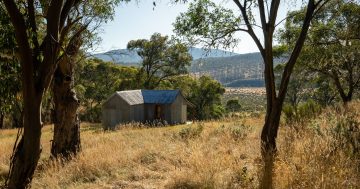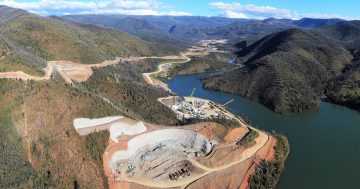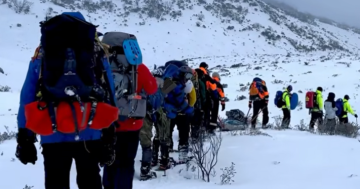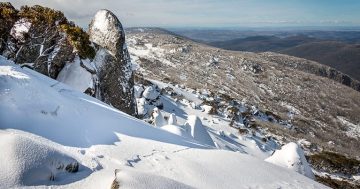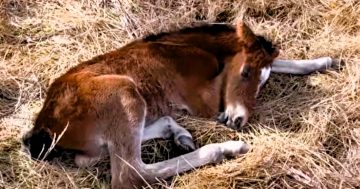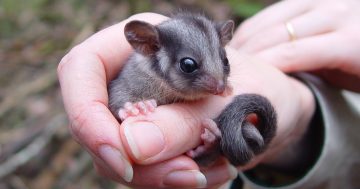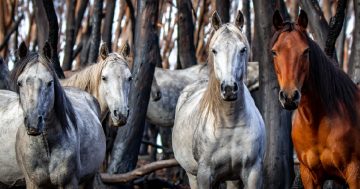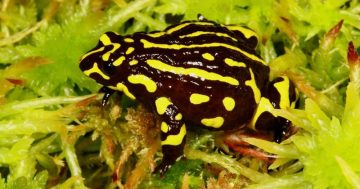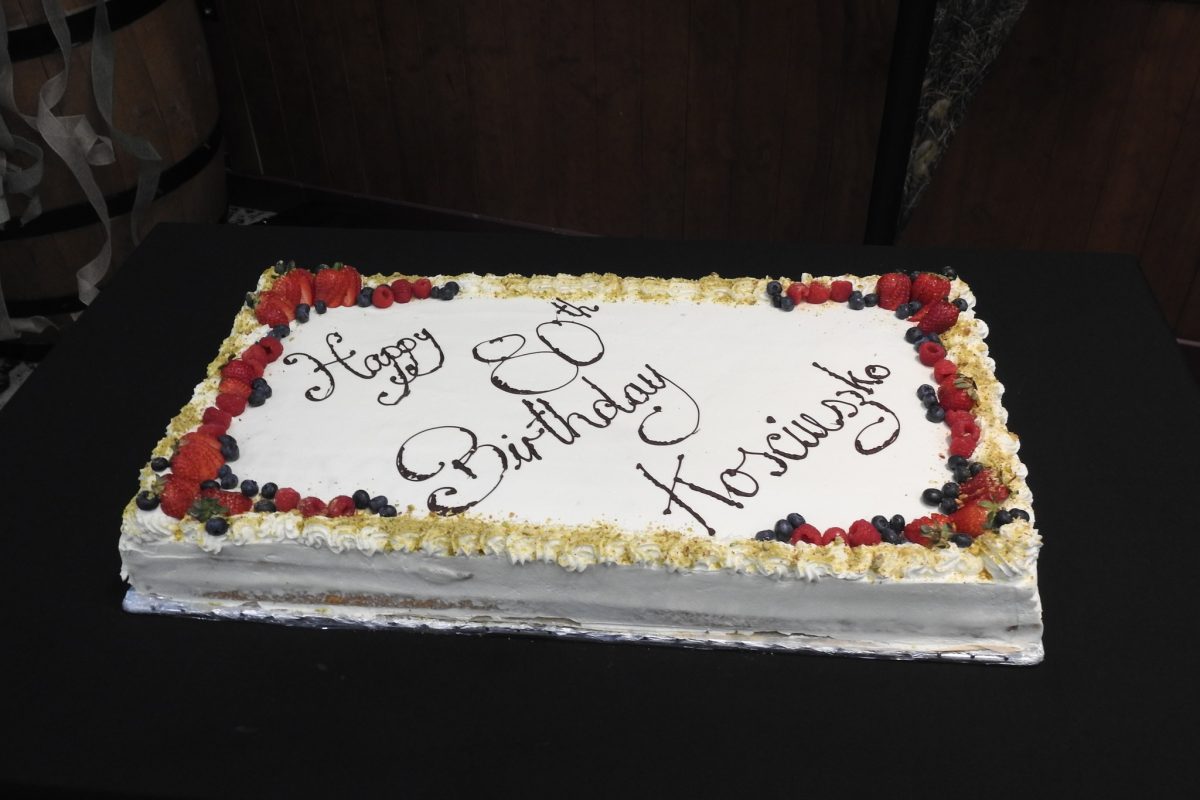
Marking 80 years since Kosciuszko State Park was proclaimed, a lively celebration in Thredbo last week highlighted the ongoing cultural relationships that sustain and support the park’s history and continued legacy. Photo: Kosciuszko Heritage/Facebook.
It can’t pass without note the fact April 2024 marks the 80th anniversary of the proclamation of Kosciuszko State Park, now known as Kosciuszko National Park.
And it didn’t pass without celebration as an enthusiastic group of people, which included the Polish ambassador Maciej Chmielinski, gathered at Thredbo last week to mark the milestone.
The Polish connection harks back to explorer Sir Paweł Edmund de Strzelecki who – during a geographical survey of NSW back in 1840 – decided to bestow Australia’s tallest mountain peak at 2228 metres with the name Kosciuszko after Polish cultural and political hero Tadeusz Kosciuszko.
It has been suggested that as Strzelecki made his way over the southeastern portion of the Great Dividing Range he named the highest peak “Koscuizko” because of its resemblance to the mound raised by the citizens of Krakow in Poland, in tribute to Tadeusz Kosciuszko who died in 1817, his remains buried among the kings tombs in nearby Wawel Cathedral in 1819.
The first tentative steps to its genesis as a national park came in December 1906, when the NSW Government gazetted an area of 300 sqkm of the highest peaks centred on Mount Kosciuszko, naming it National Chase Snowy Mountains.
This, the first alpine reserve in Australia, would eventually expand to encompass 1,250,000 acres (518,299 ha) as a dedicated state park as a result of the Kosciusko State Park Act which was passed in April 1944 – officially rendering it Kosciusko State Park.
The act and Kosciusko State Park trust successfully protected Spencers Creek from a proposed dam development. It also protected areas in the main range from ski-related development in the 1960s.
In 1967, the National Parks Act was passed and management of the park was handed to the newly created National Parks and Wildlife Service (NPWS).
The name would continue to be misspelt as Kosciusko until 1997.
Last week’s celebration, hosted by the National Parks Association (NPA) also saw current and former National Parks staff, representatives of the Polish-Australian community, conservation and bushwalking groups, the Public Service Association and other supporters of Kosciuszko National Park.
Former Kosciuszko regional manager Dave Darlington said the event was an important opportunity to get many of the former park employees together to share their memories about the challenges they faced managing this very complex national park since the 1960s through to more recent times.
NPA NSW President Dr Grahame Douglas said it was a privilege to mark this milestone in Kosciuszko’s history.
“Kosciuszko National Park is truly an Australian icon, a majestic alpine landscape, the largest conservation reserve in NSW, the source of the mighty Murray, Murrumbidgee and Snowy rivers and the irreplaceable home of so many unique species,” he said.
Mr Douglas paid homage to the First Nations custodians who cared for the Australian Alps over millennia and thanked the many people who had advocated for the protection of the high country and especially the rangers and other staff whose work has sustained that legacy.
The event highlighted the continued symbiotic relationship between the Monaro Ngarigo Aboriginal people and the Polish-Australian community.
Just last year, Ngarigo representatives visited Poland to take part in events to commemorate Paweł Strzelecki.
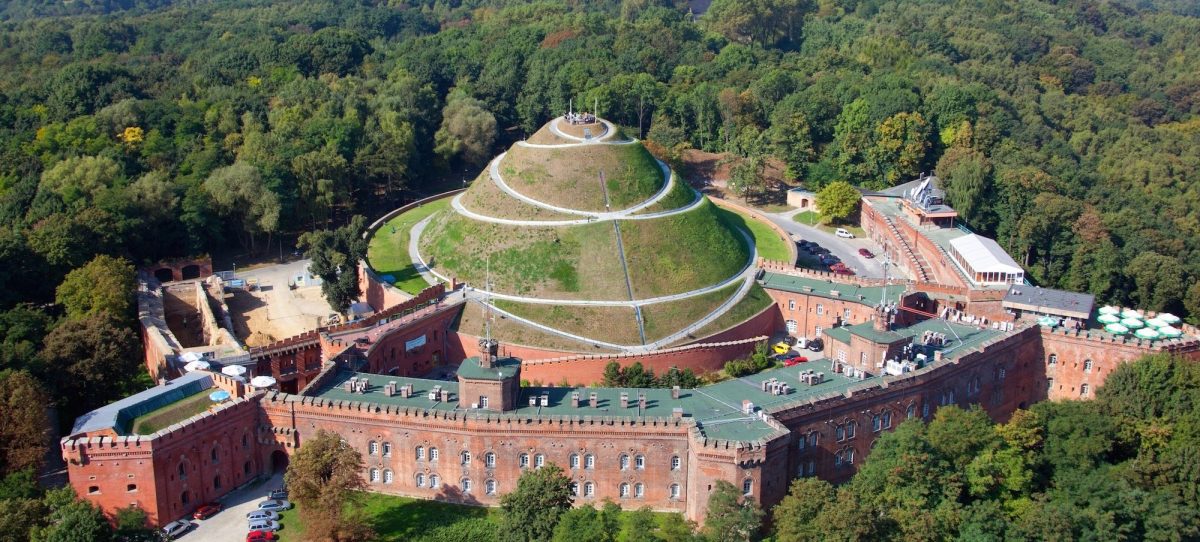
Tadeusz Kosciuszko Mound at Krakow in Poland. Photo: Paweł Krawczyk.
Their trip to Poland was organised by Kosciuszko Heritage Incorporated (KHI), a Polish Australian community organisation based near Sydney.
During events to mark the Year of Paweł Strzelecki in Poland, the Djinama Yilaga Choir, led by Walbunga/Ngarigo artist Cheryl Davison-Overton and accompanied by Candelo guitarist Melanie Horsnell, performed songs in the Dhurga language.
The Monaro Ngarigo community’s Aunty Iris White and Uncle John Dixon and KHI’s Andrzej Kozek captivated audiences with their stories about Mount Kosciuszko.
It marked the second such visit to Poland for the Monaro Ngarigo community, the first taking place in 2017 to celebrate the bicentenary of Tadeusz Kosciuszko’s death.
KHI spokesperson Urszula Lang said Kosciuszko was a champion of equal rights, freedom and liberty.
“Like Australia’s First Nations, Poles through history have fought hard to have Country acknowledged when Poland was invaded and partitioned,” she said.
“For these reasons, our connection to Mount Kosciuszko and Kosciuszko National Park, and the values associated with the name of Kosciuszko and its history, are very strong indeed.”
Meanwhile the proposal to assign an Indigenous dual name to Mount Kosciuszko is pending further information.
Kunama Namadgi, meaning snow and mountain, was submitted to the Geographical Names Board of NSW by the Toomaroombah Kunama Namadgi Indigenous Corporation to sit alongside Mount Kosciuszko in 2019.
But on Monday (22 April), a spokesperson for Geographical Names Board of NSW said extensive consultation with relevant Aboriginal communities was required before they could make a decision to advertise the proposal.
Original Article published by Edwina Mason on About Regional.







